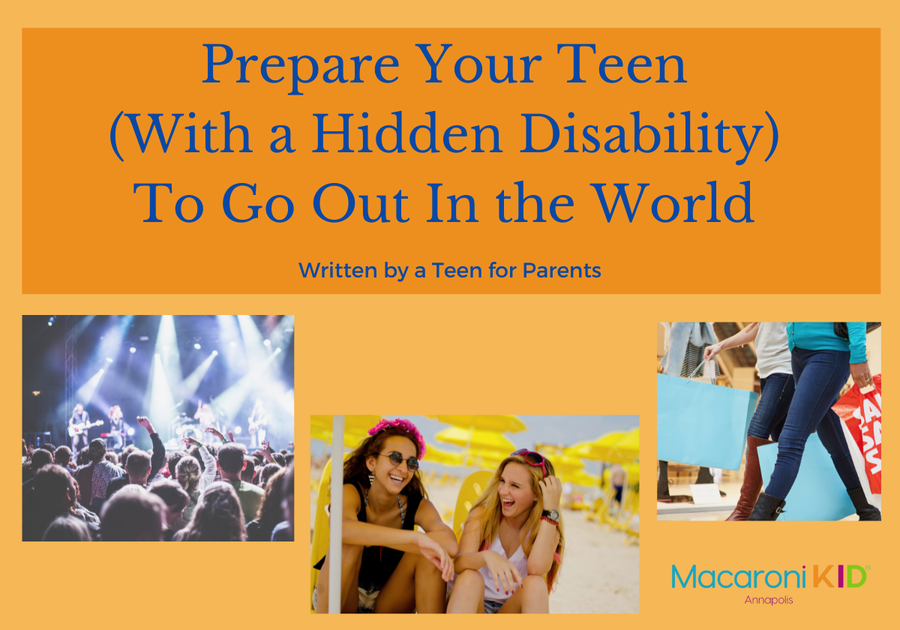Growing up as a teen with medical disabilities, I have all the urges to want to go explore the world and make dumb teen decisions, but, my health issues and overprotective parents tend to hold me back. Here is a list of ways you can make sure your disabled teen is a little bit more prepared for the big world ahead.
5 Ways to Prepare Your Teen With a Hidden Medical Disability to Go Out in the World!
1. Nutrition
With my disability, I tend to need lots of electrolytes and salt so I try to keep at least one full gatorade, one water, and some form of salty snack like pretzels, nuts, or saltine crackers with me on hand. Make sure your teen always has access to something that will make them feel better, something unique for your own child.
2. Extra Money
I can't tell you how many times I’ve been out with my friends, have been feeling bad, and had to hurry to a store to buy some gatorade. My parents try to make sure I always have extra cash on me at all times so I can buy what I need. I often find myself having to buy extra snacks or drinks, and that ends up saving my whole night.
3. Medical ID
Having a medical ID is crucial, especially for teens with hidden disabilities. They're just getting to that age where they can advocate for themselves, but if anything were to happen to them, having the medical ID is great for first responders. I paid $1.10 for the Sunflower Lanyard for people who have non-visible disabilities. When wearing this lanyard and at places like the airport, officials can identify it and give you special attention if needed. You can get more information about Hidden Disabilities and order the official Sunflower Lanyard at https://hiddendisabilitiesstore.com/us/shop.html. We also put a medical ID on my lanyard, that I can wear to big social events like concerts and festivals, just incase anything were to happen, there are instructions for who to call and what to do until the ambulance arrives.
4. Medication
Having my "as needed medication" or PRNs are crucial to carry with me and keep me feeling safe and balanced. Giving your teen the ability to carry their own meds is a big responsibility and it's up to each family to decide. Whether it's asthma your teen is dealing with or epilepsy, medication is a very important part of feeling your best. Your teen might not always be around you, now that they are growing up.
5. Support system
As a teen with a disability, you run into many needs that the typical teen doesn't run into. With my disability, I get dizzy and sometimes collapse, but your teen might face other problems. If I need something or are having a medical emergency, my parents might not be able to get to me quickly. So, I have built a team of trusted adults and older teens that can support me. They include family, school friends, and neighbors. I teach my friends about my hidden medical disability and tell them how to help me. That way when we are at the mall, getting coffee or somewhere, they you can contact my parents and get me the help I need. This will ensure that your teen is never alone, or stuck in a situation.
These 5 things can make it easier on the life of a teen with a disability as well as ease the stress of a parent when sending their teen into the world.
According to the Hidden Disabilities Sunflower website:
"Globally 1 in 7 of us live with a disability. And of those, 80% are invisible. That is 1 billion people who are living with a non-visible disability.
While some of us experience a disability that is visible, many of us have a non-visible impairment or condition. These non-visible disabilities, also known as invisible or hidden disabilities are not immediately obvious. They can be physical, mental or neurological and include, but are not limited to, autism and Asperger syndrome, cognitive impairments such as learning difficulties and dementia, as well as mental health conditions and speech, visual impairments or hearing loss. They also include respiratory and chronic conditions such as asthma, diabetes, chronic pain and sleep disorders when these significantly impact day-to-day life.
And often, many people experience a combination of both visible and non-visible impairments and conditions.



